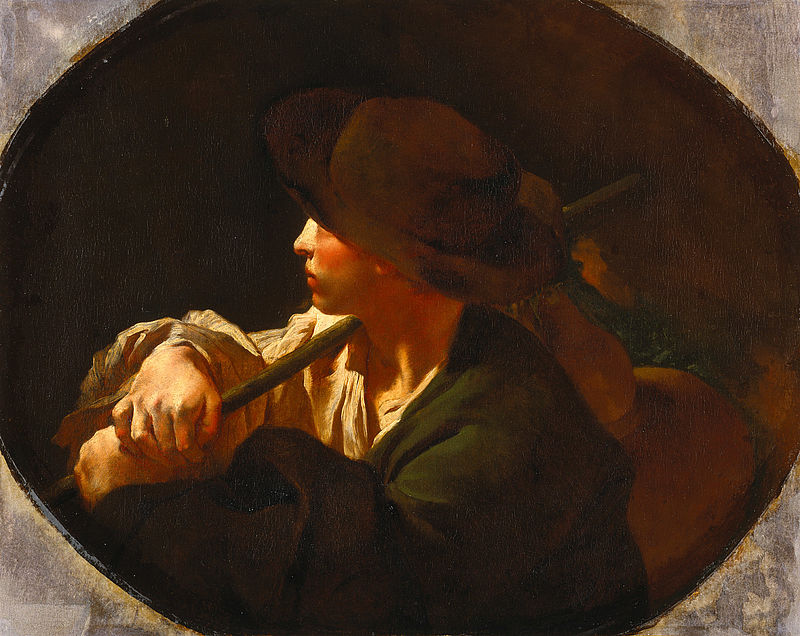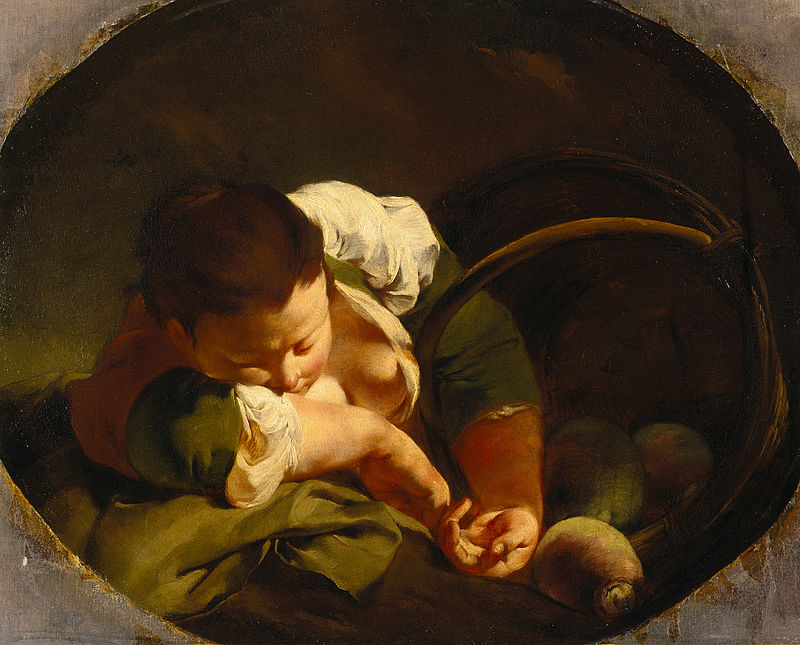Shepherd Boy
Giovanni Battista Piazzetta (1682 - 1754)
Framesize 79.50 x 95.50 x 5.10 cm
Piazzetta’s unusual rendering of a Peasant Girl and a Shepherd Boy is already apparent in the chosen picture format – a transverse oblong. The boy is curtailed, his face turned slightly to the back and partly covered with a large hat. The sleeping girl’s face is turned towards the front, and with her low cleavage, the artist emphasises her intimate, wanton character.
Piazzetta’s style is characterised by clearly defined chiaroscuro with a solid palette and vibrant skin surfaces. In the youthful figures, the artist is guided by Caravaggio’s half-figures. The genre-like quality and unemotional realism of the paintings as well as the rustic popular character is taken from Crespi, who since the 1690s had been considered the principal master of the Bolognese school of painting. His oeuvre is largely characterised by a combination of the classical ideal of the Carracci brothers and Guido Reni (1575–1642) and the composition and colouration of Guercino.
Piazzetta found the erotic element in 17th century Dutch painting. Two comparable counterparts are owned by the Museum of Fine Arts in Boston. Both paintings date back to 1720, and other similar works to the 1820s. The Salzburg paintings still show influences from Piazzetta’s time in Bologna, and were therefore probably painted around the same time as the examples above – around the early 1720s.
Besides numerous commissions for oil paintings, Piazzetta was also known among his contemporaries for his high-quality drawings and book illustrations.
HABERSATTER Thomas: Piazzetta Giovanni Battista, Peasant girl, Shepherd boy, in: DUCKE Astrid, HABERSATTER Thomas, OEHRING Erika: Masterworks. Residenzgalerie Salzburg. Salzburg 2015, p. 18
More artworks by Giovanni Battista Piazzetta
Vision of St Philipp Neri (Sketch for the altar painting in S. Maria della Fava, Venice), ca 1725
Giovanni Battista Piazzetta
Inv. no. 248




